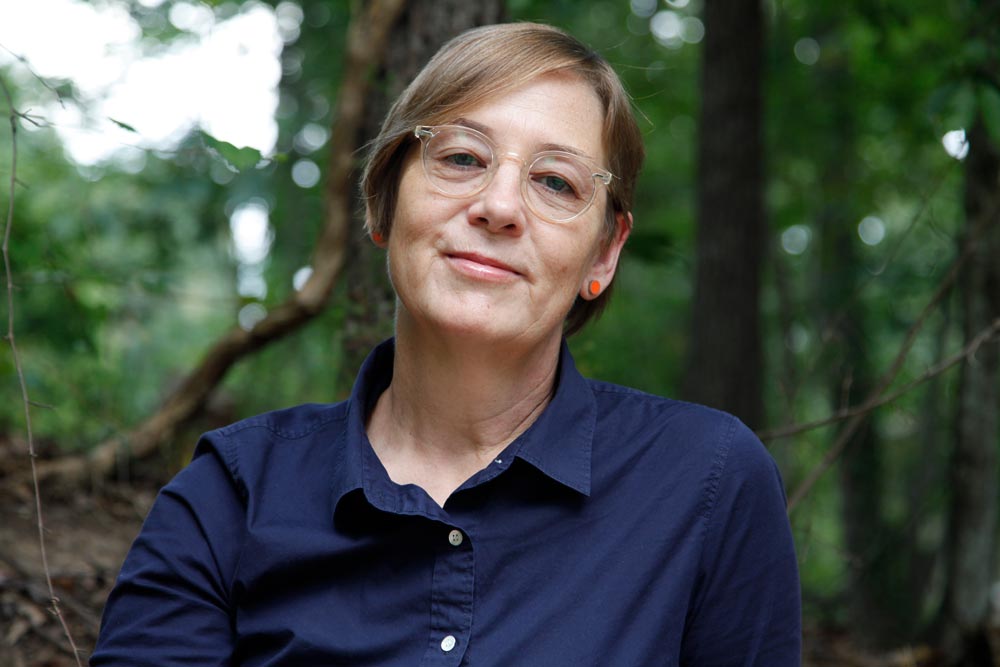Durham, NC | Spello, ITALY
PHOTOGRAPHY
PAINTING
A red blanket caked with mud. A child’s shoe, pink and white and filled with sand. These are two of the roughly 1,000 items included in the Anti-Archive of Trauma, part of artist Susan Harbage Page’s 13-year U.S.-Mexico Border Project. These objects tell the stories of the people who wore them and serve as markers for the stories we will never know. Harbage Page’s work takes the space around the border (that for most of her fellow Americans exists only in the abstract) and concretizes it as a collection of specific objects — a toothbrush, a smashed cell phone, a deflated inner tube, a pink bra — left behind by undocumented migrants as they risk their lives attempting to cross into the United States. “In 2007, I heard an NPR story which stated that 20 percent more women and children die than men when crossing the U.S.-Mexico border,” says Harbage Page. “I couldn’t get that figure out of my head. I wanted to see for myself what was happening on our southern border.”
She decided to make a pilgrimage — the first of over 20 she would make in the span of 13 years — to the border between Matamoros, Mexico, and Brownsville, Texas. Walking, biking and canoeing along the banks of the Rio Grande, she photographed lost and discarded items as they were found in the landscape, then tagged and re-photographed them in her studio (on colorful backdrops to counter the implication that they are evidence of any crime). The objects were later united in an exhibition to serve as witness to the trauma taking place along our border zone. The militarization of liminal spaces is something Harbage Page experienced first hand when she was just ten years old. On a 1969 camping trip traveling through Europe with her mother and three older sisters, the family freely crossed 22 borders. But they were detained, searched and interrogated as they crossed the border into Romania in their red Volkswagen van.

ARTIST'S NOTE
“My work touches on many topics including gender, immigration, and migration, and rethinks the ways we look at diversity, identity and difference."
The experience of being trapped between two borders and belonging to neither side was a pivotal experience for Harbage Page. It reframed the world for her from a larger perspective. In 1996, during a North Carolina Arts Council fellowship residency in Israel and Palestine, she was interrogated and witnessed many acts of violence at the frequent checkpoints and border crossings in the region. She spent the majority of her time in the Negev Desert with a community of indigenous Bedouins who were fighting for equal access to water, schools, and community services.
In exploring what separates those who have access and those who do not, Harbage Page’s work extends to textiles and a rethinking of our relationship to items traditionally made and worn or used by women. “Textiles: A Metaphorical Tracing,” has unfolded through different bodies of work, including “Merletti/Lace” (2012) comprised of ink drawings based on lace collars and doilies, rendered in a way that prompts the viewer to see the intersection of beauty and dissonance. In these intricate drawings, she conceptually recreates the labor of anonymous women by representing each stitch in a lace collar with a tiny drawn circle. In embracing conceptual art, where the ideas behind the work are often considered more important than the final product, Harbage Page has found her voice and her calling. “[Art] is the one space that can create dialogue that might not otherwise happen,” explains the artist, who holds an MFA in photography from the San Francisco Art Institute and is an associate professor of women’s and gender studies at UNC-Chapel Hill. “Art can move people to think beyond themselves and see social injustices in a new way.”
![]()

How did you come to establish a studio — and live part time — in Italy?
“In 1984, while studying at L’Universita per Stranieri in Perugia, I randomly exited a train in Spello, Italy. I walked up Via Cavour to Via Largo Mazzini, to Via Giulia and finally to the Belvedere. I found the light, architecture and history profoundly moving, giving me a sense of continuum. It has been my home for inspiration ever since. I eventually returned with a Fulbright scholarship in 1992. I ended up staying with a group of cloistered Augustinian nuns who became my friends and family.”
Tell us something about yourself that we might not find on the internet.
“I have a master's degree in saxophone performance. And I have a life-size statue of a Madonna in my living room. She came from a church in Pennsylvania. I painted her bright pink; I think she is happier now.”
Tell us about your first time.
“My first sale of a piece to a museum was while I was still in high school. In 1977, the Greenville County Museum of Art purchased one of my works. My first solo exhibition was at Davidson College. It was about visualizing music. I photographed a lot of musicians in motion, blurry hand-colored images.”
What advice would you give artists who are hesitant to show their art?
“Make a lot of work. Don't stress too much about your shows. You will have many. No one single show will define you as an artist. Make the work for yourself. Enjoy the process. Find a way to give back. One of my long-term goals has been to mentor younger women artists.”





